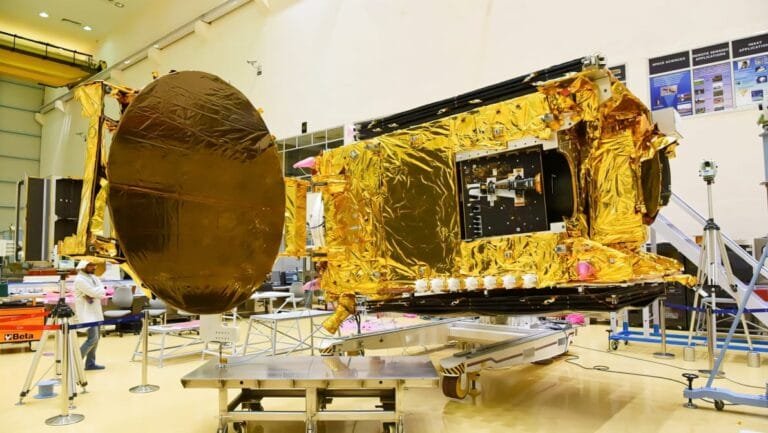
An artist’s rendering shows how Planet Nine might appear in the distant outer Solar System
Eight planets (the last of which is Neptune) have been confirmed in our Solar System. However, in the past few decades, astronomers have suggested that another, larger planet may exist somewhere far beyond these eight—often named Planet Nine
What is “Planet Nine”?
This planet’s mass is estimated to be 5-10 times that of Earth. Its orbit may be highly elongated, eccentric, and slightly off the plane of the Solar System’s planets. Thus, the “Planet Nine” proposal is based on the following: “If the orbits of some small, very distant objects (distant ice-clusters or trans-Neptunian objects) cannot be explained by our existing eight planets, then perhaps there is a hidden, larger planet gravitationally influencing them.”
Why was it proposed? — Evidence and Inspiration
Astrophysicists have discovered that an extra-massive planet may exist to explain these strange objects. Initial Suggestions Professors Konstantin Batygin and Michael E. Brown published a paper in 2016 in which they considered a “distant giant planet” to explain such distant orbits. They suggested that a planet far beyond Neptune could influence the orbits of these strange trans-Neptunian objects in such a way that they appear “clustered” to our view. Modeling and Simulations Astronomers also ran computer simulations to demonstrate how a planet on an elongated orbit beyond Neptune might affect trans-Neptunian objects. For example, one study showed that a planet of 5-10 Earth masses at a distance of ~400-800 AU could explain the orbits of some large trans-Neptunian objects.
Hidden Worlds in the Solar System Map
Objects like “Sednoids,” whose perihelion is too far away to be clearly visible due to Neptune’s gravitational influence, are hidden in the map. It’s worth noting that the “outer part” of the solar system has been little explored. The visualization is very difficult: being so far away, light is very slow and objects move very slowly. Surveys have been conducted only occasionally, but data is scarce. The orbital picture changes frequently, making detection difficult. Therefore, hidden planets or large objects may exist out there that we haven’t yet seen. “Planet Nine” is an example of this idea.
Benefits of “Planet Nine” and Implications, If Existing
If this planet does exist, it would have many implicative implications: our solar system would become even larger than we have understood so far, with another major planet. This will give us a new perspective on the formation and evolution of the solar system: when this planet formed, where it came from, and how it found its orbit. Researchers will have a new target, and the limits of the “unknown” in astronomy will expand.
Controversies and Problems—Why Haven’t We Found Them Yet?
Alternative Explanations Some researchers have suggested that the clustering of trans-Neptunian objects may be due to observational bias—that is, we found these objects this way because it was easier to find them. Another alternative idea is that modified gravitational theories, such as Modified Newtonian Dynamics (MOND), could explain the peculiarities of these objects without the existence of a “Planet Nine.” The Problem of Formation and Orbit If this planet is indeed there, the question arises: how did it get there? Did it escape from its original location and find its way there?
Current Status and Further Search
Recent Progress: An article published in 2024 suggests that the search for Planet Nine could be resolved soon, if we use precise methods. In 2025, some new surveys and ultra-deep data found a potential object, but it hasn’t yet been fully recognized as a planet. What’s next? Large telescopes and surveys like the Vera Rubin Observatory are now scanning the entire spectrum for potential Planet Nine.
Conclusion: Planet Nine
So, does Planet Nine exist? Currently, we can say this: likely, but not confirmed. There are strong indications that some unique distant gravitational influence exists, but such an influence could be caused by a massive planet at an extraordinary distance, or by other causes. If this planet is found, it would be a revolutionary discovery in solar system science. If it is not found, it will remind us that “not-findings” are also important in astronomy because they improve our understanding.






